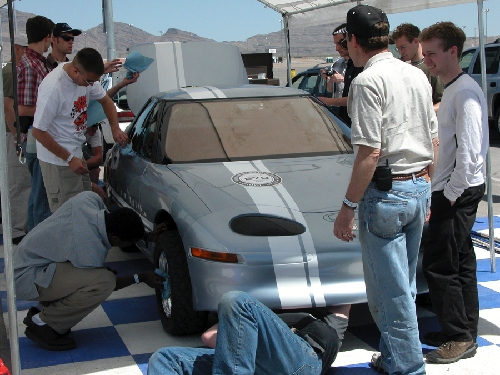Franklin’s research continues
In April 1751, the Royal Society in London published a collection of letters from Ben Franklin to Peter Collinson entitled "Experiments and Observations on Electricity, Made at Philadelphia in America."
Based on his fabled "kite and key" experiment as well as other observations, Franklin's ideas helped unify scientific thought at the time by linking together concepts of static electricity, lightning and stored electrical charges. Because his work also led to the practical implementation of lightning rod technology that saved countless lives, Franklin was awarded the Royal Society's prestigious Copley Medal just two years later.
Franklin's important publication also described his research with a unique invention of the time, called a Leyden jar. These portable jars were first created at the University of Leyden in the Netherlands to provide a compact way to experiment with electrostatic phenomena. The Leyden jar had two electrodes, separated by an electrolytic fluid, that made it possible to store and release electricity from a glass container.
After his kite experiment, Franklin observed: "When rain had wet the kite twine so that it can conduct the electric fire freely, you will find it streams out plentifully from the key at the approach of your knuckle, and with this key a phial, or Leiden jar, may be charged: and from electric fire thus obtained spirits may be kindled, and all other electric experiments performed which are usually done by the help of a rubber glass globe or tube; and therefore the sameness of the electrical matter with that of lightening completely demonstrated."
Franklin wired together several Leyden jars like a "battery of cannons" to create an even larger electrical energy storage and discharge system. His "battery" description is still used today to define an array of electrochemical storage cells that act as one unit.
By moving the two electrodes closer together in a Leyden jar and replacing the electrolyte liquid with a dielectric insulator, researchers of the time found that they could create a "condensor" that could pack even more electrostatic energy into the same storage space.
Condensors, also known as capacitors, are different from traditional battery cells in that they can store and release energy very quickly. By contrast, a battery usually takes a longer time to recharge while releasing its energy to an electric-powered device over a more gradual period of time.
The development of "electric double-layer capacitors" in the late 20th century once again increased the electrical storage capability of these devices. Nanotechnology processes could now couple the two electrodes with a separate electrolyte, so that just one molecule separated a positive and negative charge from the electrolyte and electrode interface on each of the two sides of the double layer capacitor. One hundred times the amount of electricity could now be quickly stored and released in the same space as a traditional electrolytic capacitor, accompanied by an increase in electric power. EDLC devices became known as "supercapacitors" or "ultracapacitors" because of this huge leap in capacitance.
During 2003, the Las Vegas Motor Speedway was the site of another historic experiment. Brigham Young University's School of Technology fielded a team of two faculty advisers and 18 student engineers to race a unique concept car on "The Strip," a quarter-mile drag strip at LVMS. The BYU School of Technology had been awarded an EV-1 electric car by General Motors for its university research program under a GM educational grant.
Dr. Tom Erekson and Dr. Perry Carter outlined a research project to substitute ultracapacitors for lead-acid battery cells in order to reduce 1,000 pounds of weight. They wanted to observe how well the EV-1 and its electric motor would perform over a quarter-mile drag strip by using this alternative electric energy storage technology.
The student team wired together 160 ultracapacitors provided by Maxwell Technologies in San Diego, Calif. Their new pack could be quickly recharged within just 30 minutes by using a 412-volt "dump pack" of Optima lead-acid storage batteries loaded onto the bed of a nearby pickup truck.
Student driver Ned Carter took his turn at the starting line of the drag strip and watched the light tree count down the start of his first timed racing attempt. As the green light flashed, he shoved his foot forward on the accelerator pedal. The EV-1 launched off the starting line with a lot of torque as the pack of ultracapacitors quickly dumped their electric energy into the EV-1 motor. The dragster continued to accelerate until just about the one-eighth mile mark when the electric current flowing from the ultracapacitor pack started to sag. Since the drive train for the EV-1 was geared for just one speed, Carter stopped accelerating but still carried enough momentum to establish a time exceeding 70 miles per hour at the finish line on his first run.
The dragster made four more attempts that day to prove that ultracapacitors could be charged quickly while also accelerating a 2,000-pound electric car up to freeway speeds.
After returning to BYU, the student team added more ultracapacitors, a two-speed manual transmission and a locked differential to the EV-1 drive train before returning to the Mason Dixon Dragway in Hagerstown, Md., two years later. This time, the refurbished EV-1 increased its drag race performance times to exceed 90 mph.
Ultracapacitors within hybrid and electric-car systems complement existing storage batteries. They provide a stable flow of electricity during a battery's recharging cycle, boost horsepower for quicker acceleration of the wheels during takeoff, and rapidly store electricity created by regenerative braking systems.
Additionally, ultracapacitors can be integrated into conventional car and truck subsystems, including electric power steering, integrated starter motor-generators, remote-controlled electric locks, electric window motors, and in-cabin audio speakers.
Ultracapacitors help smooth out power spikes from electric motors, while also helping regulate the flow of electricity throughout the entire automobile. These load-leveling capabilities allow automotive designers to shrink the size and quantity of wire conductors within a vehicle's wiring harness, saving both material and labor assembly costs.
Ben Franklin would have been proud to see how far his Leyden jar experiments have progressed!
To view the latest research efforts by the BYU School of Technology, including a new world record they achieved this year on the Bonneville Salt Flats, visit www.byustreamliner.com.
Stan Hanel has worked in the electronics industry for more than 30 years and is a long-time member of the Electric Auto Association and the Las Vegas Electric Vehicle Association. Hanel writes and edits for EAA's "Current Events" and LVEVA's "Watts Happening" newsletters. Contact him at stanhanel@aol.com.















